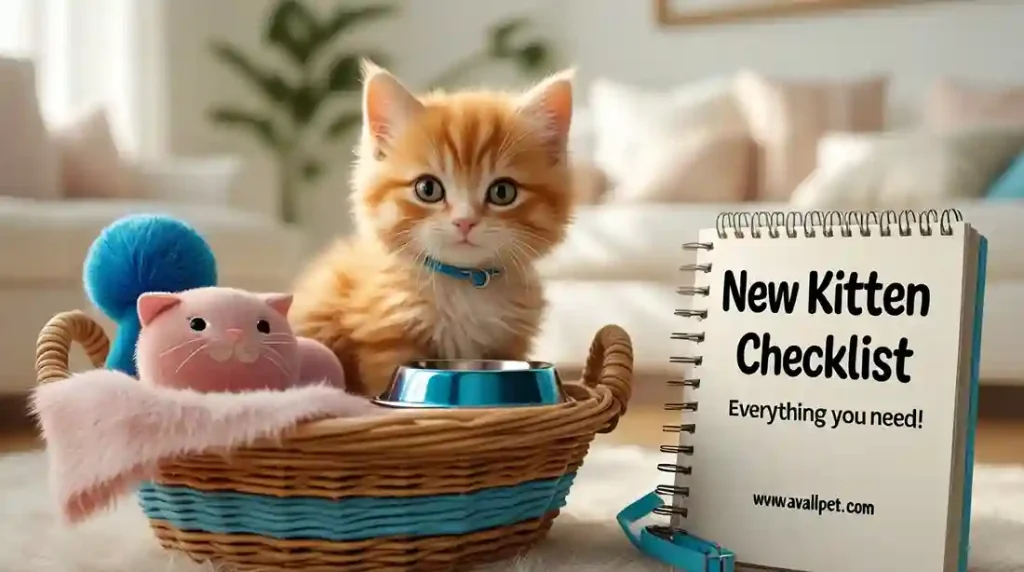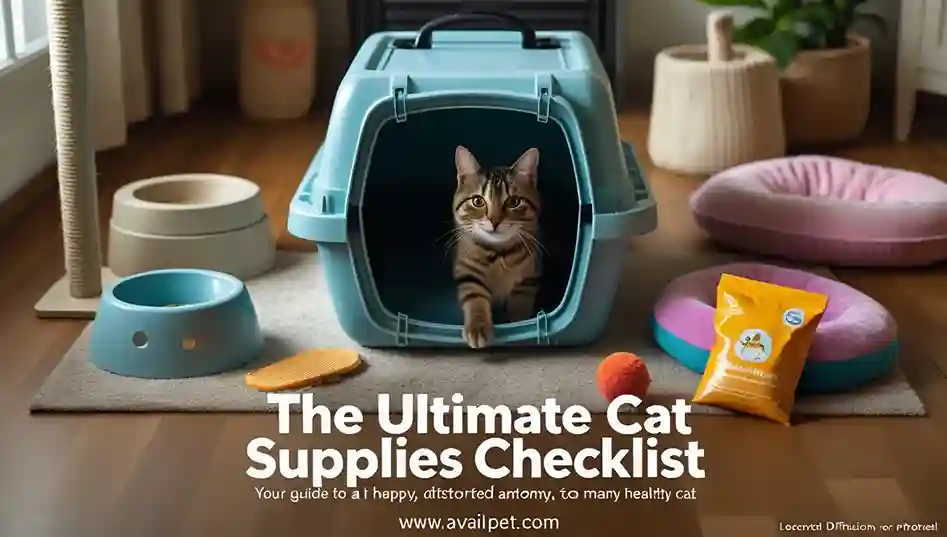One minute your cat is peacefully napping, and the next, they’re a blur of fur tearing through the house at top speed, leaping over furniture and spinning in circles. This sudden burst of chaotic energy, affectionately known as “the zoomies,” is a sight every cat owner witnesses. But what does it really mean? While it can seem random or even frantic, this behavior—scientifically called Frenetic Random Activity Periods (FRAPs)—is a completely normal and common part of feline life. Understanding the cat zoomies meaning is a key aspect of decoding your pet’s instincts, and it’s one of the many fascinating topics covered in our complete guide to Common Cat Behaviors.
The Cat Zoomies: Key Takeaways
- Normal & Instinctual: Zoomies are a natural, healthy way for cats to release a sudden burst of pent-up energy.
- Common Triggers: They often occur after using the litter box, after a long nap, or during periods of boredom.
- A Sign of Well-being: In most cases, zoomies indicate a happy, comfortable cat expressing natural playfulness.
- Manage, Don’t Punish: The best approach is to ensure a safe environment and provide regular play to help manage their frequency.
What Are Cat Zoomies? (Defining the Behavior)
So, what exactly are these chaotic episodes? The scientific term for zoomies is Frenetic Random Activity Periods (FRAPs). This perfectly describes the behavior: it’s frenetic (wildly energetic), random (seemingly unprompted), and occurs in a short, concentrated period.
During a zoomies episode, you might see your cat:
- Suddenly darting at high speed from one room to another
- Racing in frantic circles or figure-eights
- Leaping on and off furniture without warning
- Spinning or chasing their own tail
- Displaying wide, dilated pupils
- Appearing temporarily “possessed” or in their own world
It’s important to note that this is different from a panic response. A scared cat will typically try to hide or escape a specific threat, while a cat with the zoomies is engaging in purposeless, energetic play. They are burning off steam, not running from danger.
Why Do Cats Get the Zoomies? (5 Root Causes & Meanings)
While it may seem random, there are several common triggers for these frenzied bursts. Understanding the “why” helps you see it as a normal part of your cat’s life.
1. Pent-Up Energy Release
This is the most fundamental reason. Cats are natural hunters wired for short bursts of intense activity followed by long rest periods. If they’ve been sleeping or lounging for an extended time, all that stored energy needs an explosive outlet. The zoomies are simply their way of balancing their energy budget.
2. Post-Litter Box Euphoria
Many cats experience a sudden burst of energy right after defecating. This is likely a combination of relief from physical pressure and a deep-seated instinct to distance themselves from their waste to avoid attracting predators.
3. The Post-Nap “Twilight Zone”
Cats transition quickly from sleep to wakefulness. Waking up from a deep sleep, especially in the evening or early morning (their natural hunting hours), can trigger an immediate need for activity, resulting in a zoomies session to “rev up” their systems.
4. Boredom and a Need for Stimulation
A cat that lacks mental and physical enrichment throughout the day may resort to zoomies as a form of self-amusement. It’s their way of creating their own fun and relieving boredom. If zoomies are very frequent, it might be a sign your cat needs more interactive play.
5. Nighttime Crepuscular Instincts
Cats are crepuscular, meaning they are most active at dawn and dusk. This hardwired instinct can manifest as the “midnight crazies” or very early morning zoomies, as their bodies are naturally telling them it’s time to be up and “hunting.”
Could Zoomies Be a Sign of Happiness or Playfulness?
In the vast majority of cases, yes—zoomies are a clear sign of a happy, playful, and healthy cat. A cat that feels safe and content in its environment is the one most likely to let loose with these frenetic energy bursts. Think of it as the feline equivalent of a child spontaneously running around the backyard out of pure joy. It indicates that your cat is comfortable enough to be vulnerable and expend energy on play rather than constant vigilance. This is distinctly different from behaviors rooted in stress or anxiety, such as a cat that is meowing constantly or hiding.
Zoomies vs. Problematic Behavior: When to Be Concerned
While zoomies are typically normal, it’s important to recognize when frenetic behavior might signal an underlying issue. You should consider consulting your veterinarian if the zoomies:
- Are Triggered by Apparent Pain: If your cat seems to run frantically from the litter box while crying, or flinches when touched before a zoomies episode, it could indicate pain (e.g., from a urinary issue or arthritis).
- Seem Compulsive or Excessive: If the episodes last for an unusually long time, occur multiple times per hour, or seem impossible to interrupt, it could point to underlying stress or a medical condition like hyperthyroidism.
- Are Accompanied by Other Symptoms: Look for signs like over-grooming, not eating, or hiding between episodes.
- Cause Self-Injury or Destruction: While zoomies are energetic, a cat in true distress may not be aware of its surroundings and could hurt itself.
When in doubt, a veterinary check-up is always the safest course of action to rule out medical causes for any sudden behavioral change.
How to Manage or Reduce Disruptive Zoomies
If your cat’s zoomies are becoming disruptive or happening at inconvenient times (like 3 AM), here are proactive strategies:
- Schedule Interactive Play: The most effective solution. Use a wand toy to engage your cat in a 15-20 minute play session twice daily, ideally before their typical zoomies time. This mimics the hunt-catch-eat cycle and burns energy constructively.
- Provide Environmental Enrichment: Cat trees for climbing and puzzle feeders for mental stimulation can prevent boredom-induced zoomies.
- Create a Safe “Race Track”: Clear breakable items or obstacles from their usual zoomies path to prevent accidents.
- The “Let It Be” Approach: Sometimes, the best response is to simply ensure their safety and let the episode run its course. Trying to calm or stop them can be futile and may even add to their excitement.
FAQs about cat zoomies meaning
Are zoomies a sign of a happy cat?
Yes, in most cases, zoomies are a sign of a happy, playful, and healthy cat. It means they feel safe and comfortable enough in their environment to release their pent-up energy in this exuberant way.
Why do cats get the zoomies after pooping?
This is very common! It’s likely a combination of physical relief from the pressure of defecating and an instinct to distance themselves from their waste to avoid attracting predators in the wild.
How can I stop my cat’s 3 AM zoomies?
The best strategy is to adjust their energy cycle. Engage them in a vigorous 15-20 minute play session with a wand toy right before your bedtime, followed by a small meal. This mimics the natural hunt-eat-groom-sleep cycle and encourages them to sleep through the night.
Should I be worried about my kitten’s zoomies?
No, zoomies are completely normal and very common in kittens. They have enormous amounts of energy to burn as they grow and develop. As long as they’re eating, drinking, and otherwise acting normally, kitten zoomies are typically nothing to worry about.
Conclusion
Understanding the cat zoomies meaning transforms these chaotic episodes from puzzling behavior into a recognizable sign of your cat’s natural instincts and well-being. By recognizing the common triggers and implementing simple management strategies, you can coexist peacefully with your cat’s frenetic energy bursts.
Zoomies are just one piece of the fascinating puzzle of feline behavior. Continue learning about your cat by exploring our other guides, such as the endearing meaning behind cat kneading or how to interpret the silent communication of a cat’s slow blink.
Sources
- American Association of Feline Practitioners (AAFP). (2022). Feline Behavior Guidelines.
- Landsberg, G., Hunthausen, W., & Ackerman, L. (2013). Handbook of Behavior Problems of the Dog and Cat (2nd ed.). Elsevier.
- International Cat Care. (2023). Vocalisation – when is it a problem?
- Cornell Feline Health Center. (2022). Feline Hyperthyroidism.






